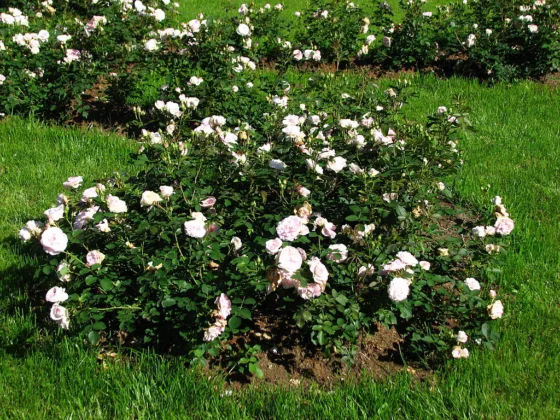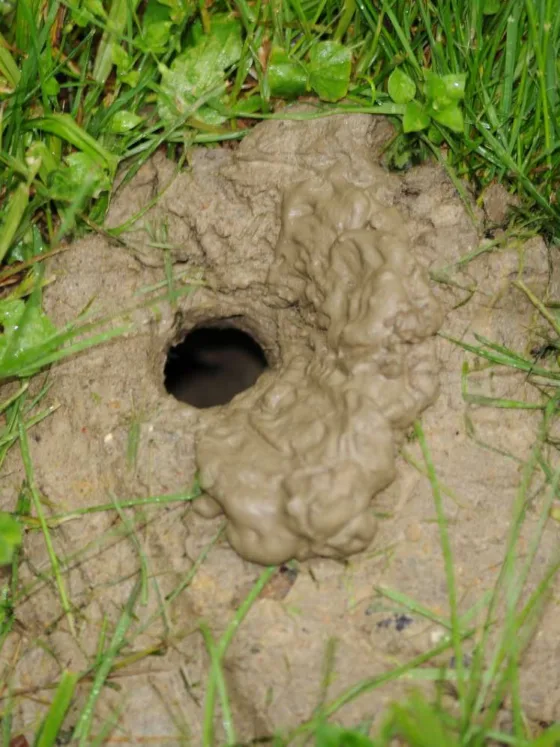Table of Contents Show
Does your garden bloom vigorously right through into October?
There’s no excuse for it not to, especially when you have chrysanthemums in your gardening palette!
Yes, the mighty garden mum, the “official” flower favorite of fall, has taken the gardening world by storm.

That’s really no surprise because this plant literally sells itself; it blooms from late summer right until the harshest frosts put an end to all vestiges of gardening for the season, it is floriferous to a fault, and it comes in an unimaginable range of colors, and it is almost boringly easy to grow!
And yet many northern gardeners and landscapers remain on the outside of this hot new trend.
In a part of the world where we talk endlessly about the challenges of extending our gardening seasons as late in the year as possible, here’s the ultimate solution right under our noses!
So how does one explain this apparent paradox?
After much research, discussions with professional landscapers, and some late nights fueled by too much coffee, I think I’ve got the answer.
I believe that while most everyone knows of this flowering wonder and its many attributes, many northerners cling to an old perception that mums aren’t hardy, so they don’t have them in their gardens.
And this perception they hold would have been correct, at least until recently.
You see, the time was when chrysanthemums were the domain of the local florist in cities and towns across the North.
On many occasions when a potted mum was presented as a kind gift, it would be planted out into the front garden with the sincerest hope that it would settle in and contribute to the landscape for years to come.
Often times it would survive the harsh northern winter by some stroke of luck and sprout again late the next spring, but then the real disappointment would set in.

The patient gardener would watch and wait for the repeat performance, but it would never come.
The survivor would grow bushy, but it would only start developing flower buds just as the fall frosts hit, never actually flowering before old man winter came and put an end to that vain attempt.
The problem was that the mums from the florists weren’t reliably hardy for northern winters, and if they did survive, their flower buds would succumb to the killing frosts before flowering.
You see, florists’ chrysanthemums aren’t bred for their hardiness or timely flowering. Stick them out in your northern gardens and they may survive the winter, but they will never flower in time to contribute to the landscape.
But that was old history; things have really changed.
Read Also:
Leading breeders from around the world, most notably those at the University of Minnesota and the Morden Research Centre in Manitoba realized the great potential in this plant for northern gardens and knew it wouldn’t take much to develop entire series of mums which were both hardy and flowered early enough in summer to have an impact. And so that’s exactly what they did!
The time of the chrysanthemum in northern gardens is definitely here.
No matter where you live in the North, you now have the perfect plant to extend your flowering season right through to the deepest frosts of late fall.
And now you have no excuse not to have one of these in your landscape!
So now that you’re ready to join the garden mum craze, let’s look at how to grow and use these hardy wonders.
How To Grow Garden Mums
Chrysanthemums are the consummate “flowers” of the gardening world.
They enjoy high-quality garden soils with lots of organic matter incorporated.
They require a regimen of regular watering without being immersed in standing water.
A light summer mulch of leaves or grass clippings will help to conserve moisture and is worth the effort.
They are heavy feeders and respond well to general-purpose garden fertilizers, particularly in early spring and again in mid-summer as the flower buds are forming; the improvement in performance will be obvious.

Overall, these plants are relatively trouble-free, and while some insect and disease troubles might occasionally arise, they aren’t usually too problematic.
Garden mums should be planted in full sun for the best growth and flowering performance.
Plant them about 18″ apart for a solid color effect, greater if you want to showcase a particularly interesting growing habit.
Prepare to divide them every couple of years, as the centers will die out and leave the plants looking ragged. Just dig out the clumps, discard the centers, and divide and replant the green shoot pieces from the periphery.
Besides keeping the plants looking healthy, it’s a great way to multiply your stock of mums!
While these northern varieties of mums are in fact quite hardy, they can still be somewhat temperamental if winter conditions are stressful.
Make sure they get some snow cover over the coldest days of winter; if this isn’t reliable in your area, then you would be wise to mound a light leaf or peat moss mulch over top just to be safe.
It’s also a good idea to leave the spent stalks standing over winter to help trap snow.
Popular Varieties
Thanks to highly successful breeding programs like the ones at Morden, the University of Minnesota, and Jeffries Nurseries, there is an endless range of colors, flower shapes, and sizes of this plant available.
Virtually any flower color is possible except for true blue.
The plants themselves are usually either upright or mounded inhabit.
The upright types are best planted closer together and used to create solid masses of color in the garden, while the mounded types, also known as “cushions”, are either planted farther apart or as solitaries to showcase their attractive growth habit.
There are a number of flower types available, each with its own distinctive character.

The single “daisy” flowers remind one of the Shasta daisy but in a wide range of colors. The types then proceed to semi-double and double, both of which still show degrees of the yellow center, and finally “pompons”, the kind you find at the florists which are like rounded balls of quills.
Even the petals themselves come in a variety of shapes, some of them “recurved” and others “quilled” for an even more unusual effect.
The very hardiest and earliest blooming of the bunch is the Morden series.
These include Morden Delight (pompon, bronze, upright), Morden Fiesta (double, rose-purple, upright), Morden Canary (double, bright yellow, cushion), Morden Cameo (double, creamy white, upright), and Morden Garnet (double, deep red, upright).
These will start blooming in late August and should be hardy across the entire region.
The Minnesota mums, known colloquially as the “Minn Mums”, are also extremely hardy.
There are numerous varieties available including Minnwhite (double, white, cushion), Minnyellow (double, lemon yellow, upright), Minnrose (pompon, deep pink, cushion), Minnqueen (double, bright pink, cushion), Minngopher (double, crimson red, cushion) and Minnruby (double, ruby red, cushion).
Other popular varieties in this group include Mellow Moon (pompon, creamy white, upright), Rose Blush (double, mauve, upright), and Centerpiece (semi-double quilled, lavender, upright).
And the breeders keep on developing, producing exciting new hardy garden mums for northern gardens.
Jeffries has recently introduced the spectacular “Firecracker” series which includes Tiger Tail (double, bicolor tangerine/yellow, cushion), Dreamweaver (semi-double, mauve, cushion), Firestorm (semi-double, rich red, cushion), and Showbiz (pompon, purple, dwarf cushion).
The “My Favorite” series from the University of Minnesota features bold new mounded selections like Coral (single, coral pink, shrub cushion), Autumn Red (single, maroon, shrub cushion), and Yellow Quill (single quilled, butter yellow, shrub cushion).
Using Mums In The Landscape
Garden mums are one of the most versatile of all the garden plants to use in a northern landscape; it’s hard to imagine a garden that couldn’t benefit from a swath of these.
Because of this inherent diversity, it’s important to plan for the use of mums rather than planting them indiscriminately.
The golden rule with these is to use them in masses for maximum effect.

As with most mass plantings, keep these as odd-numbered groups of 3, 5, or 7 plants, either in a curving swath or in a solid mass.
A creative exception to this rule is the cushion-type mums, which stand alone very effectively.
They all need lots of sun and moisture, so don’t use them too close to houses or buildings.
The biggest landscape attribute of mums by far is color, so use them in artistic combinations in accordance with the rules of good color design.
The key here is their late blooming time, which runs into autumn and coincides with many of the traditionally vibrant colors of fall foliage and fruit.
Because of this, there are two approaches you can take.
The first is to design mums into a fall garden scheme that enhances the traditional yellow, orange, and red fall spectacle with complementary flower colors.
The other approach is to fly directly in the face of fall, choosing summer colors like pink, rose-purple, and mauve to prolong the summery feel of your garden right through to frost.
The key, in either case, is to not mix the two concepts, or you’ll end up with a jarring visual of colors that simply don’t work with each other.
The other consideration is their flowering period with respect to the rest of the garden. As always, a garden can be designed to either bloom continuously across the growing season or to stage a grand performance all at once, receding to the background the rest of the season.
It’s easy to use garden mums to extend the season of a garden, and in that application, they can stand alone as the last bastion of summer color before the killing frosts hit.
For the case of a “grand finale” performance, I would propose that the best way for them to contribute would be to harmonize them with the fall colors of the trees and shrubs.
There simply aren’t enough other fall-blooming perennials that could work along with them to put on a show-stopping performance.
Future Mums
And if for some reason I still haven’t convinced you to drop what you’re doing and run right out to your local garden center to stock up on these fall-blooming divas (no, it’s not too late to plant them this year!), then a quick look down the development pipeline will surely have you sold.

Developers are working on new mums with multiple colors on individual flowers, fascinating new colors such as pumpkin and lavender blue, and spreading varieties similar in habit to the “wave” petunias.
These are definitely exciting times!
So find a place in your landscape for fall mums.
You may live in a land known for its short growing seasons, but that’s no longer a good reason to not have your gardens blooming right through until winter!










